B+W Kaesemann Circular Polarizer Filter Review
In the broad strokes, all filters work the same way, they alter the balance of light in an image by absorbing, or reflecting some of the light from the scene before it reaches the film or sensor. Some filters, notably color correction filters, have diminished in importance with the advent of digital capture; after all why futz with filters when you can adjust the color balance after the fact in software. That said, some filters do things that can’t be done or undone in post processing, and a polarizing filter is one of those filters.
Polarizing filters—like polarizing sunglasses—block reflections based on the orientation, or polarization, or the reflected light.
In photography, polarizing filters are used to take the “shine” off objects, like the surface of water, or darken the sky and enhance the appearance of clouds. Polarizers can also increase the contrast in some scenes by reducing the amount of unwanted reflected light from the subject or reducing some haze.
It’s important to keep in mind there are some limitations when using polarizing filters. For example, when using a polarizing filter to darken the sky, their strength varies with their angle to the sun. Pointing towards or away from the sun has the least affect, pointing at a right angle to the sun the most. Since the amount of polarization varies with the direction relative to the sun problems can occur when using a wide-angle lens. The following two images illustrate both the effect and some of the problems that can happen.
What is a Käesemann polarizer?
Käesemann polarizers aren’t a type of polarizer so much as a brand. In 1989, Schneider Optics purchased the Käesemann/Oberaudorf Company, a company that specialized in the manufacture of glass and plastic polarizing materials. Schnieder optics claims that Käesemann’s materials provide, among other things, superior color neutrality.
In terms of what it buys you over B+Ws other polarizing filters…well I’ll be honest, other than the claimed color neutrality, I can’t really find anything else documented that rates the Käesemann polarizers superior. That said, at the time of this writing the difference in cost at many online retailers is about $15.
Multi-Resistant Coating
Multi-resistant Coatings (MRC) is B+W latest coating lens coating system, so what is it? According to Schneider Optics, MRC is an 8 layer coating process that reduces reflections (1/4 wave coating), produces a water resistant (hydrophobic coating) layer and provides a scratch resistant coating.
What this means for photographers, is 3-fold: First, the anti-reflective coatings increase contrast, and decrease flare and ghosting. Second, the hydrophobic coating helps prevent water from “sticking” to the filter, which in turn helps keep dust from sticking to the filter. Finally, the scratch resistant coating helps protect your investment when you don’t have the tools to clean it properly in the field.
That said, other than a single cheap Canon UV filter, I’ve only used B+W filters so I don’t really have anything to compare to. That said, in practice, I’ve never seen any more flare or ghosting from a MRC coated B+W filter than the lens alone without the filter attached.
Circular versus Linear Polarizers
Without getting too technical, the difference between a circular and linear polarizer is in the direction of the light they block. From a photographic standpoint, the results in the image from the two types are the same. However, due to the way that modern TTL cameras meter and focus, a circular polarizer is necessary for that functionality to work.
In short, a circular polarizer can be used instead of a linear polarizer, but the opposite is not the case. Because of that, there’s little to no reason to buy a linear polarizer.
Performance
The B+W Kaesemann circular polarizers are rated with a filter factor of 2.3 to 2.8 or stopping between 1.2 and 1.4 stops. This is right in line with most quality modern circular polarizers and better than the 2 stop (filter factor of 4) loss of lower quality circular polarizers. In practice, the actual effect on the exposure is going to depend on how much of the scene is polarized light, and how much of that is being blocked.
That said; if you’re just using the polarizer to eat light, don’t expect more than about 1-1/3 stops out of these polarizers.
The hydrophobic part of the MRC coating lives up to its promise as well. When sprayed with a fine mist of water, only tiny droplets formed, as they grew past a certain size, they would simply sheet off.
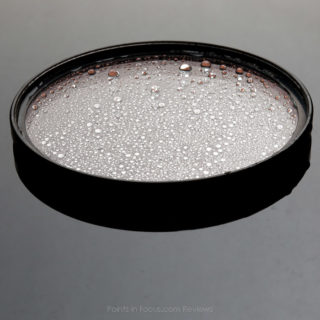 |
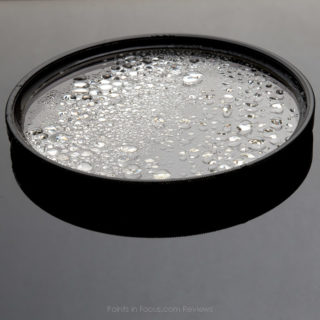
|
Similarly, when water was dripped onto the surface from an eye-dropper, the water simply ran off the front surface of the MRC coated filter.
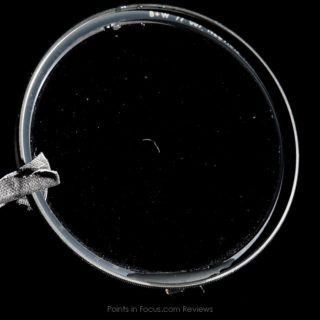 |
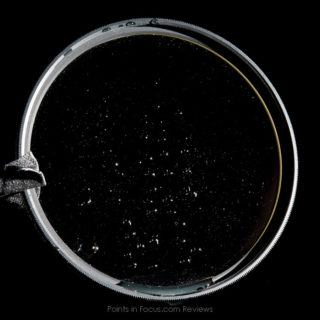 |
The MRC coating does a good job at reducing reflections as well.
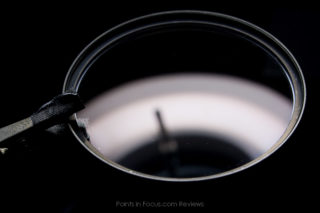 |
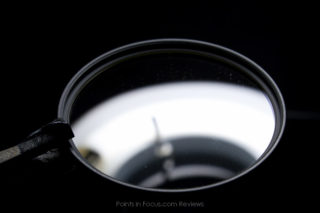 |
Conclusions
If you’re a serious photographer that shoots outdoors, you should really own and use a polarizer. That said when it comes to filters, you get what you pay for, and with polarizers, and this is even more the case. Because of their construction—usually a polarizing foil laminated between two sheets of optical glass—the potential for problems increases. Cheaper filters are more likely to have glass that’s not flat or out of parallel, use less precise coatings, and glues that are more inexpensive. The results of this can be disastrous to your image quality.
One final note, when buying a polarizer it’s more inexpensive in the long run to buy one that’s as big as you’re largest lens’s filter threads, and use a step up ring when you want to use it on a lens with smaller filter threads.
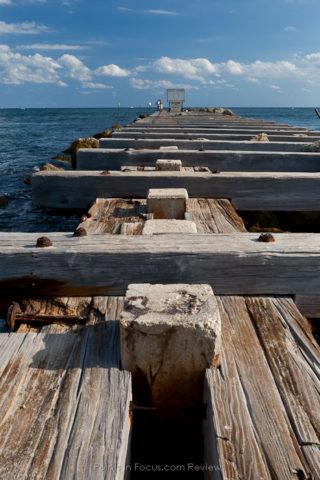

Comments
There are no comments on this article yet. Why don't you start the discussion?